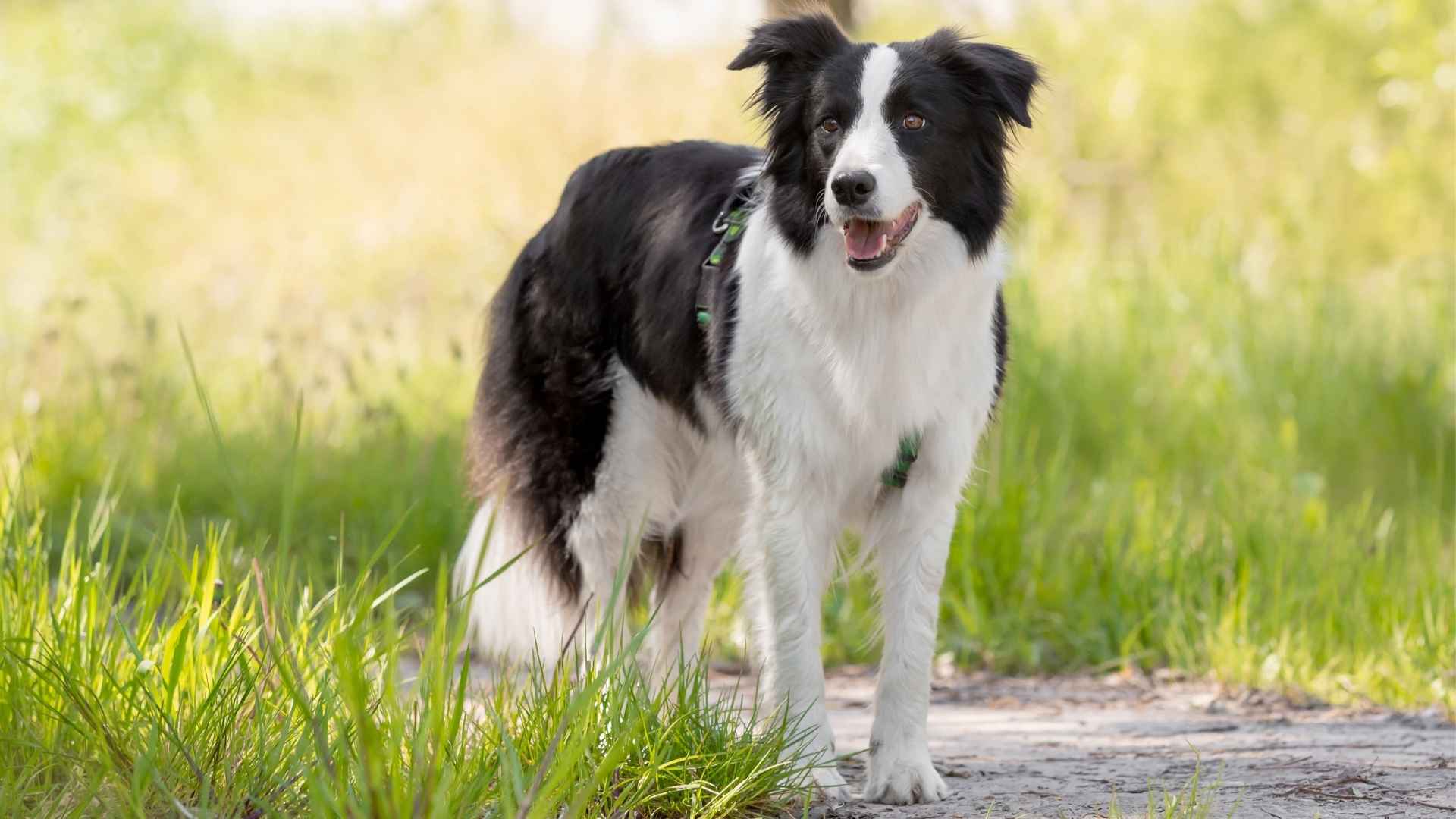When it comes to choosing a furry companion, health and longevity are often at the top of every dog lover’s list. While every pup deserves love and care, some breeds are naturally more robust thanks to strong genetics and centuries of selective breeding. These dogs tend to require fewer vet visits, experience fewer chronic conditions, and live long, active lives, making them wonderful additions to any family.
Although no breed is entirely immune to illness, healthy dog breeds tend to be resilient, energetic, and adaptive. Their hardy nature doesn’t eliminate the need for routine care, but it does offer a smoother journey through your pet’s life stages. Preventative measures, such as regular vet checkups and a nutritious diet, still play a crucial role in catching and managing any health concerns early.
In this guide, we’ll highlight some of the healthiest dog breeds, known for their vigor, low genetic health risks, and active lifestyles. Whether you’re looking for a loyal jogging buddy or a lively playmate for your kids, these sturdy canines offer companionship without constant health worries.
Most Healthy Dog Breeds
1. Australian Cattle Dog
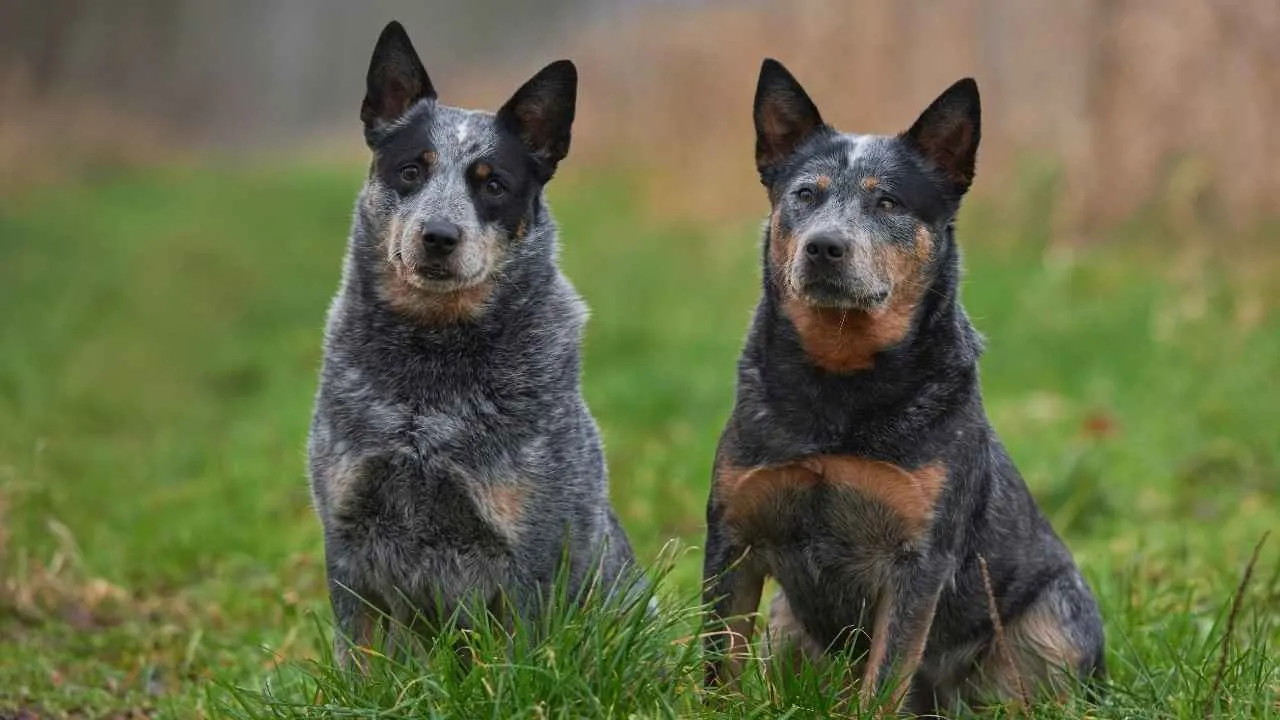
According to PetMD, Australian Cattle Dogs are highly intelligent and diligent canines, known for their strong instinct to guard both their owners and their home. With a reputation for vitality and resilience, the Australian Cattle Dog stands out among the healthiest dog breeds.
Bred from hardy working dogs and even descended from the dingo, this robust breed was developed to herd cattle in rugged conditions. Known for their muscular frame, sharp instincts, and striking blue or red speckled coats, these dogs exhibit incredible endurance and rarely experience serious health issues when properly cared for.
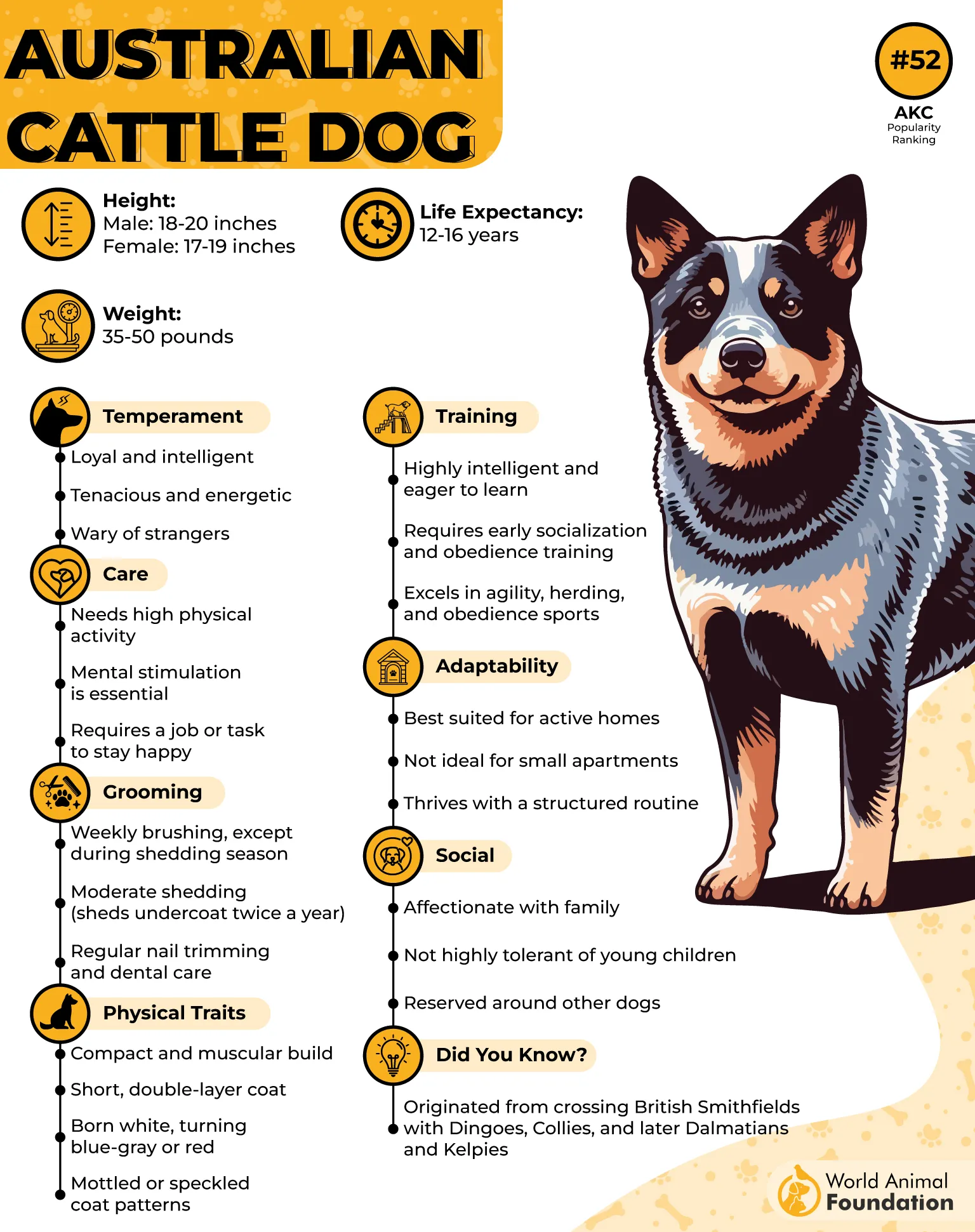
Care Needs
Australian Cattle Dogs require consistent physical and mental stimulation to stay in peak condition. Their thick double coat is weather-resistant and only needs occasional brushing, except during seasonal shedding.
These dogs thrive in environments that offer space and opportunities for active play, such as hiking or long runs. Due to their deep attachment to their primary human, they may develop separation anxiety if left alone too long, so companionship and structure are essential to their well-being.

Fun Fact: According to the Guinness Book of World Records, the longest-living dog on record was an Australian Cattle Dog named Bluey, who reached an astonishing 29 years of age.
2. Australian Shepherd
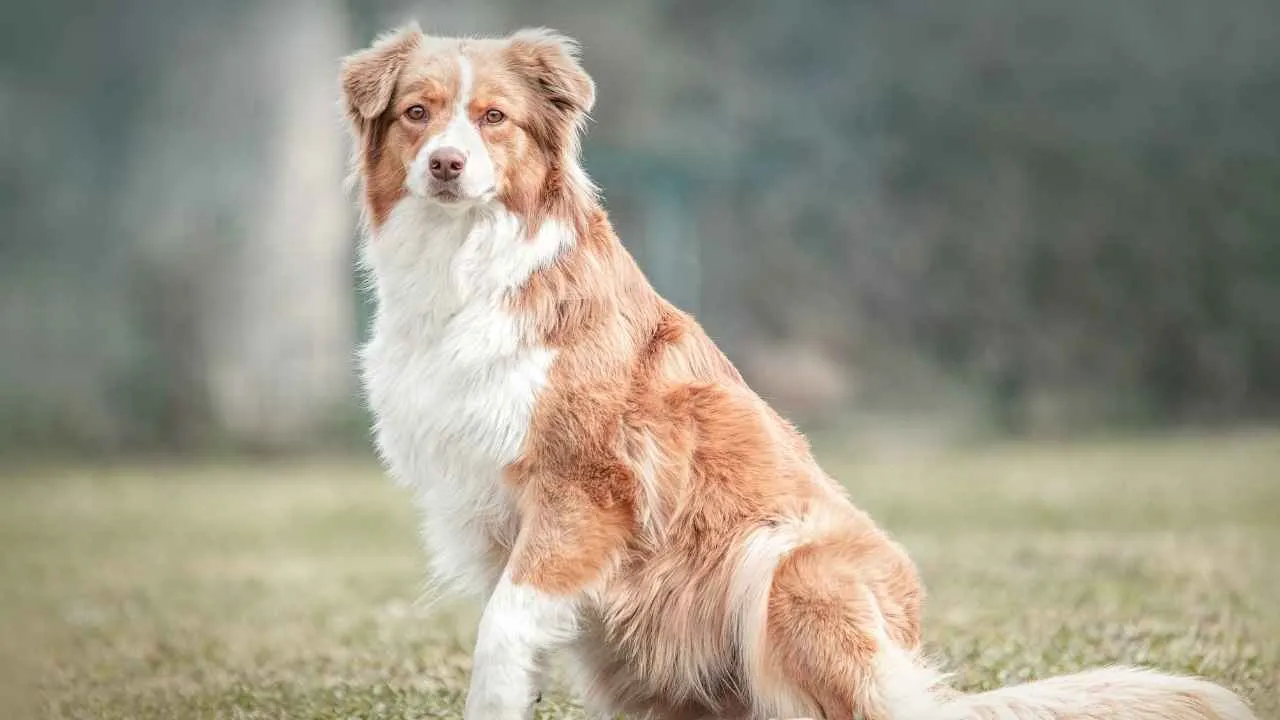
The Australian Shepherd is frequently recognized as one of the healthiest dog breeds, thanks to its sturdy build and sharp mind. Britannica states that the Australian Shepherd, as a herding and ranch dog, must be energetic, quick-thinking, attentive, confident, and responsive.
Bred to herd and work long hours alongside ranchers, this energetic breed thrives with structure and stimulation. Aussies are eager to please, quick learners, and highly responsive to training, traits that contribute to both their mental well-being and physical health.
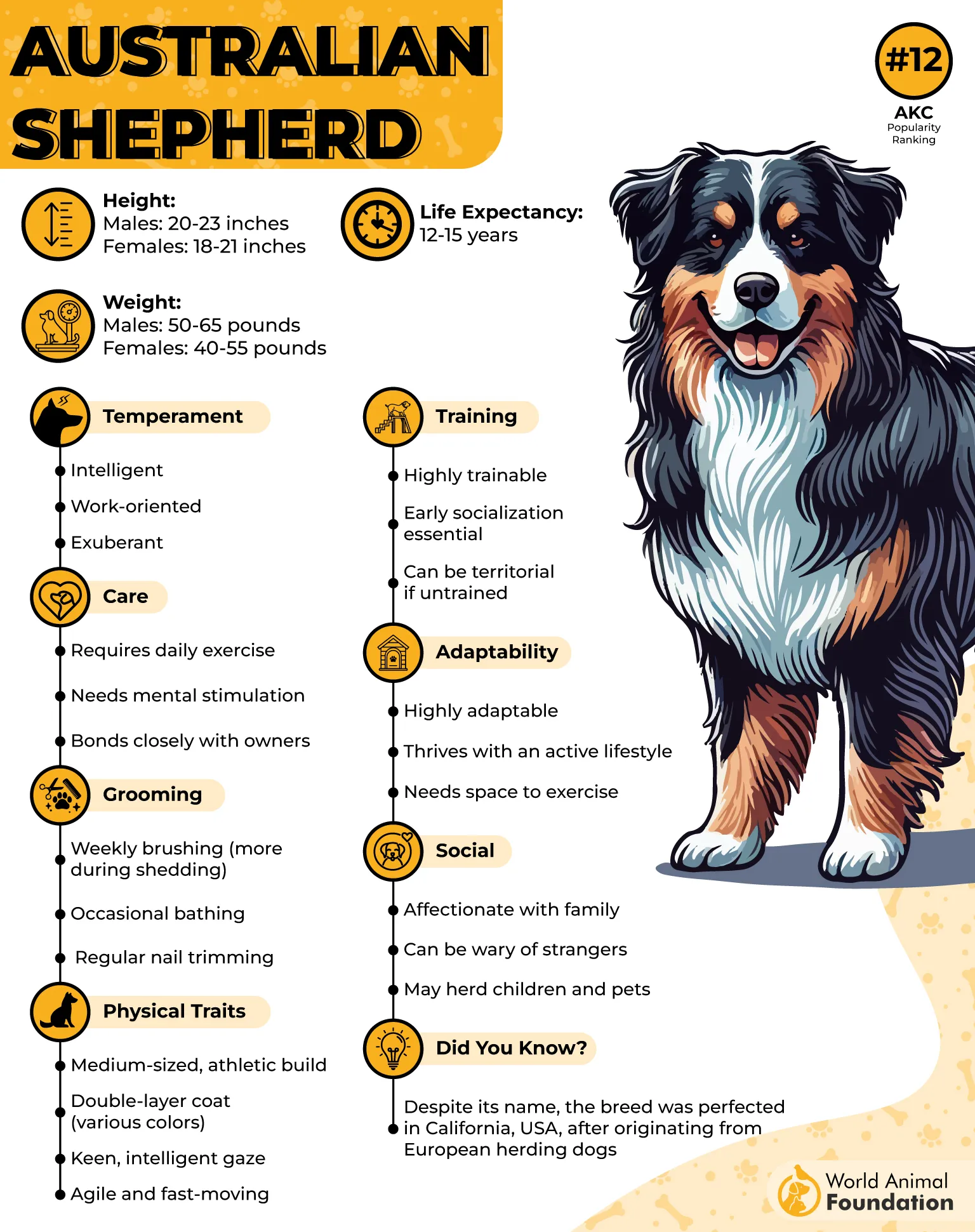
Care Needs
To maintain their overall health, Australian Shepherds need regular physical exercise and mental challenges. Daily walking or herding tasks are ideal for keeping their body and brain engaged. Their medium-length coat requires weekly brushing and occasional baths to prevent matting and skin irritation.
Routine veterinary checkups are important to screen for potential issues like hip dysplasia and hereditary eye conditions. Responsible breeders should provide eye certificates and joint health clearances for both parents. Nutrition, weight control, and appropriate early-age exercise are key in minimizing long-term joint and mobility concerns.
Fun Fact: Due to their intelligence and eagerness to learn, Australian Shepherds excel at mastering tricks and skills, making them stars in obedience and agility competitions.
3. Basenji
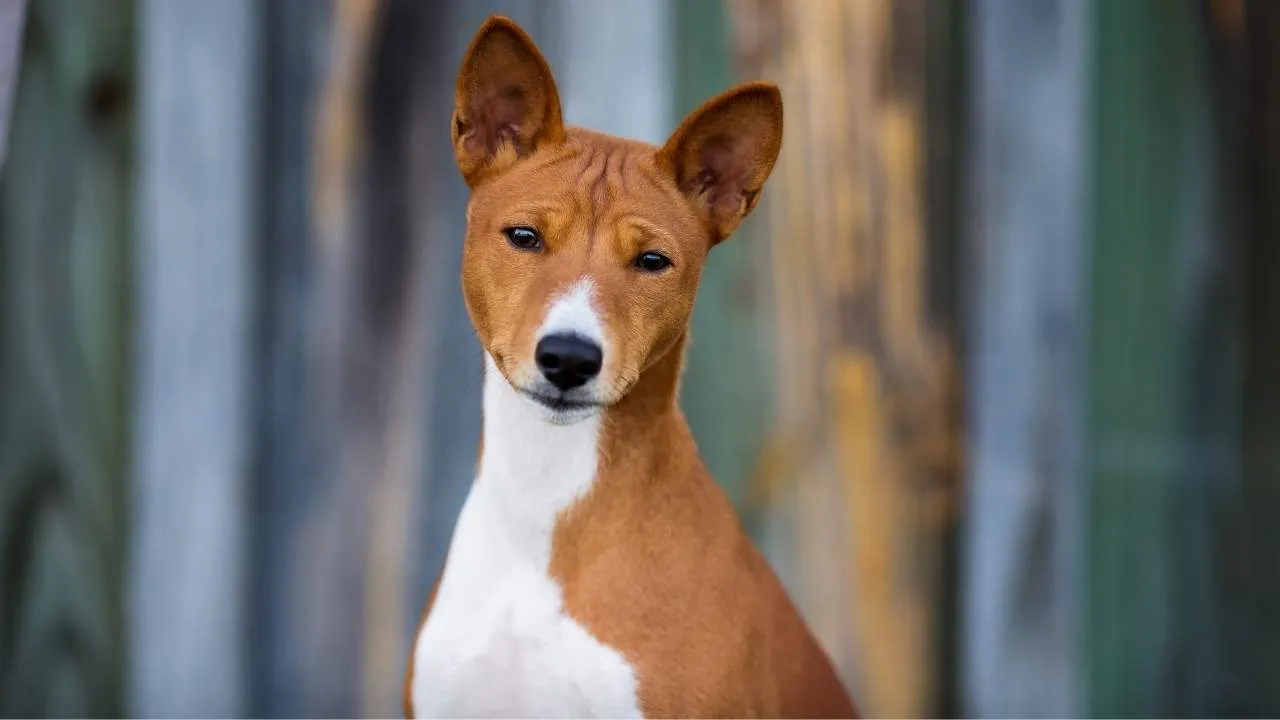
AKC notes that the Basenji, often called Africa’s “Barkless Dog”, is a small, intelligent, and graceful hunting breed with a gentle expression. The Basenji is one of the healthiest and most unique dog breeds.
Compact, agile, and clean by nature, this breed is known for its cat-like grooming habits and resilience in tough environments. With an average lifespan of 12 to 14 years, Basenjis are typically free from many of the serious health issues that affect other breeds. Their strong immune systems and natural adaptability make them ideal companions for active individuals or families.
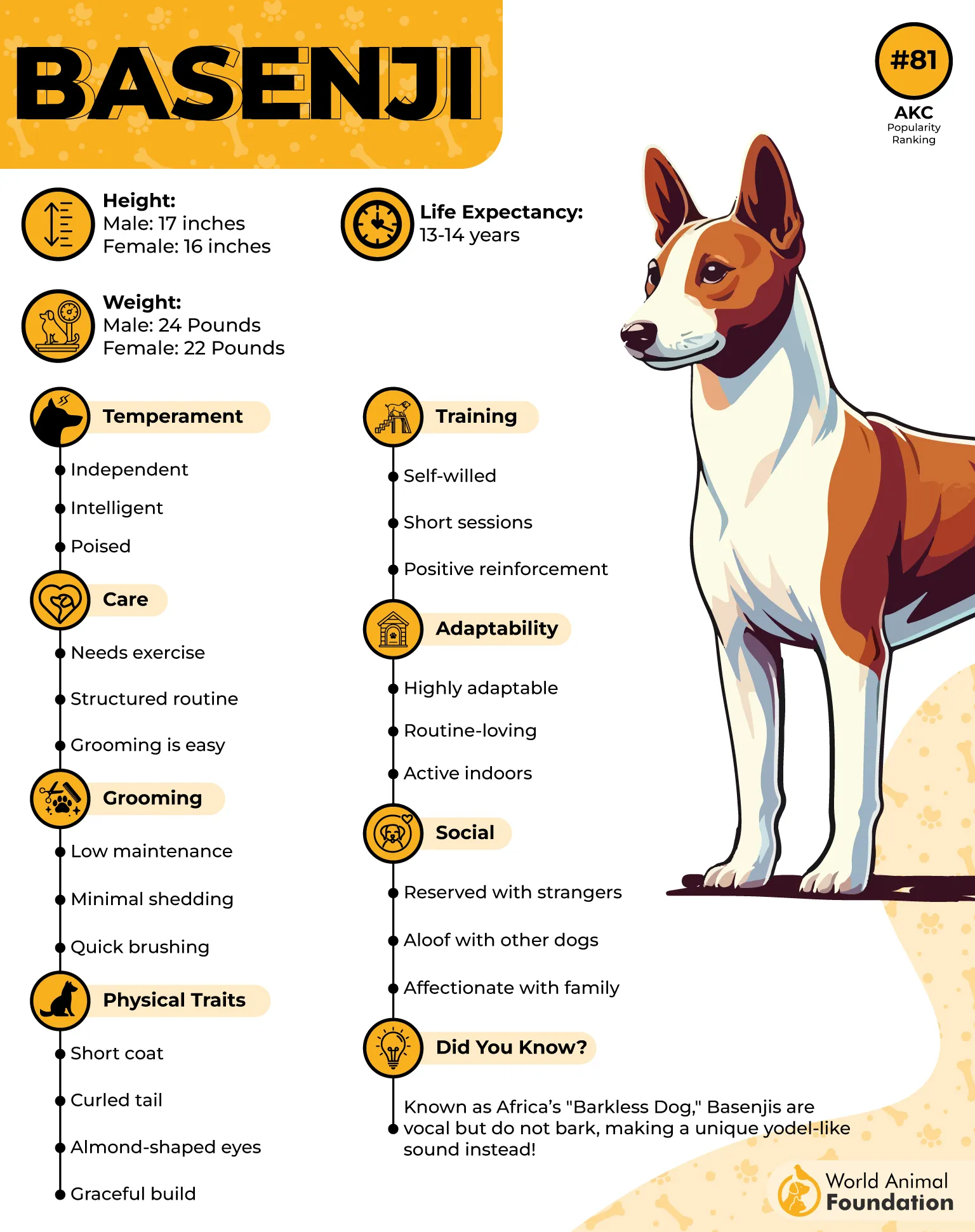
Care Needs
These hunting dogs require minimal grooming thanks to their short, low-shedding coat and fastidious self-cleaning behavior. A weekly brushing is usually sufficient. These dogs dislike cold or wet weather, so indoor comfort is a must.
Daily walks of about an hour, combined with mental stimulation, will keep them from becoming restless or destructive. Despite their quiet demeanor, Basenjis need engagement and variety to stay content. Routine vet visits, proper nutrition, and preventive care are key to maintaining their well-being.
Fun Fact: These little dogs are so meticulous about their cleanliness that they often use their front paws to wash their faces, just like cats.
4. Greyhound
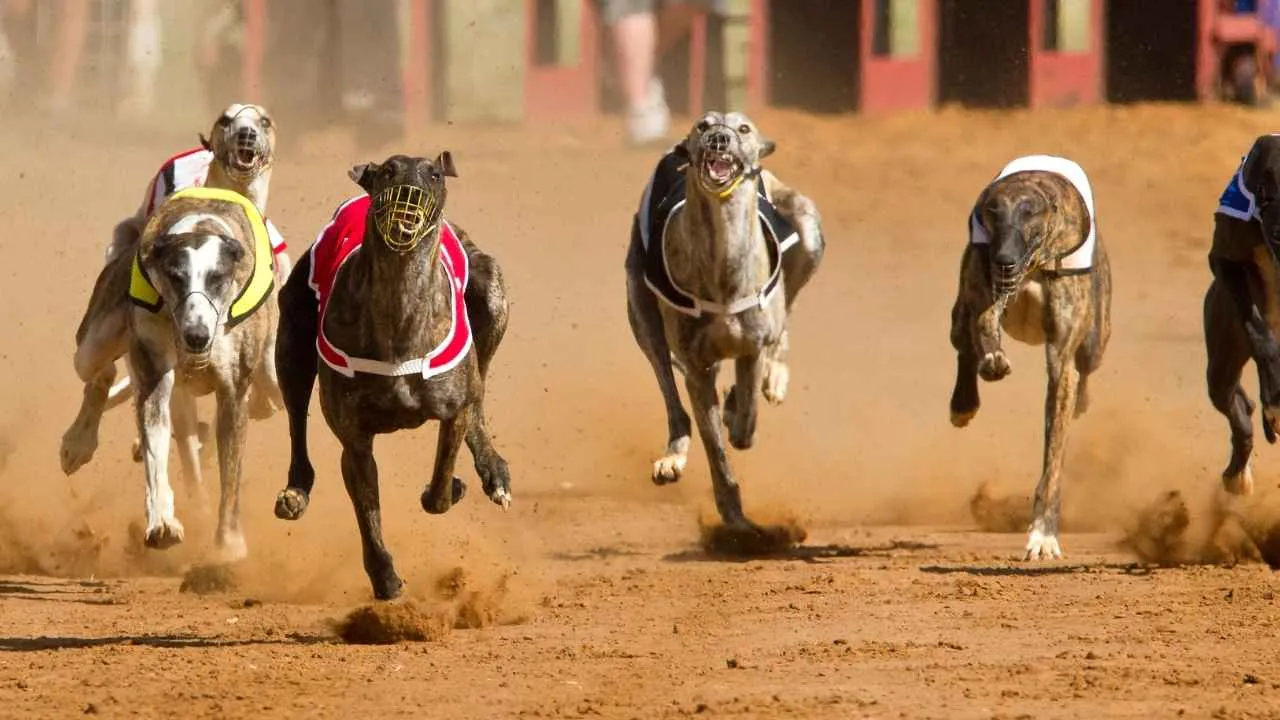
Lean, athletic, and elegant, the Greyhound is not only one of the fastest dog breeds but also one of the healthiest. Thanks to their genetic makeup and streamlined build, Greyhounds often enjoy long, illness-free lives.
While they are not immune to issues like arthritis or dental disease, they are generally less prone to serious genetic conditions than many other breeds. With responsible breeding and proper testing, these dogs remain vigorous well into their senior years.
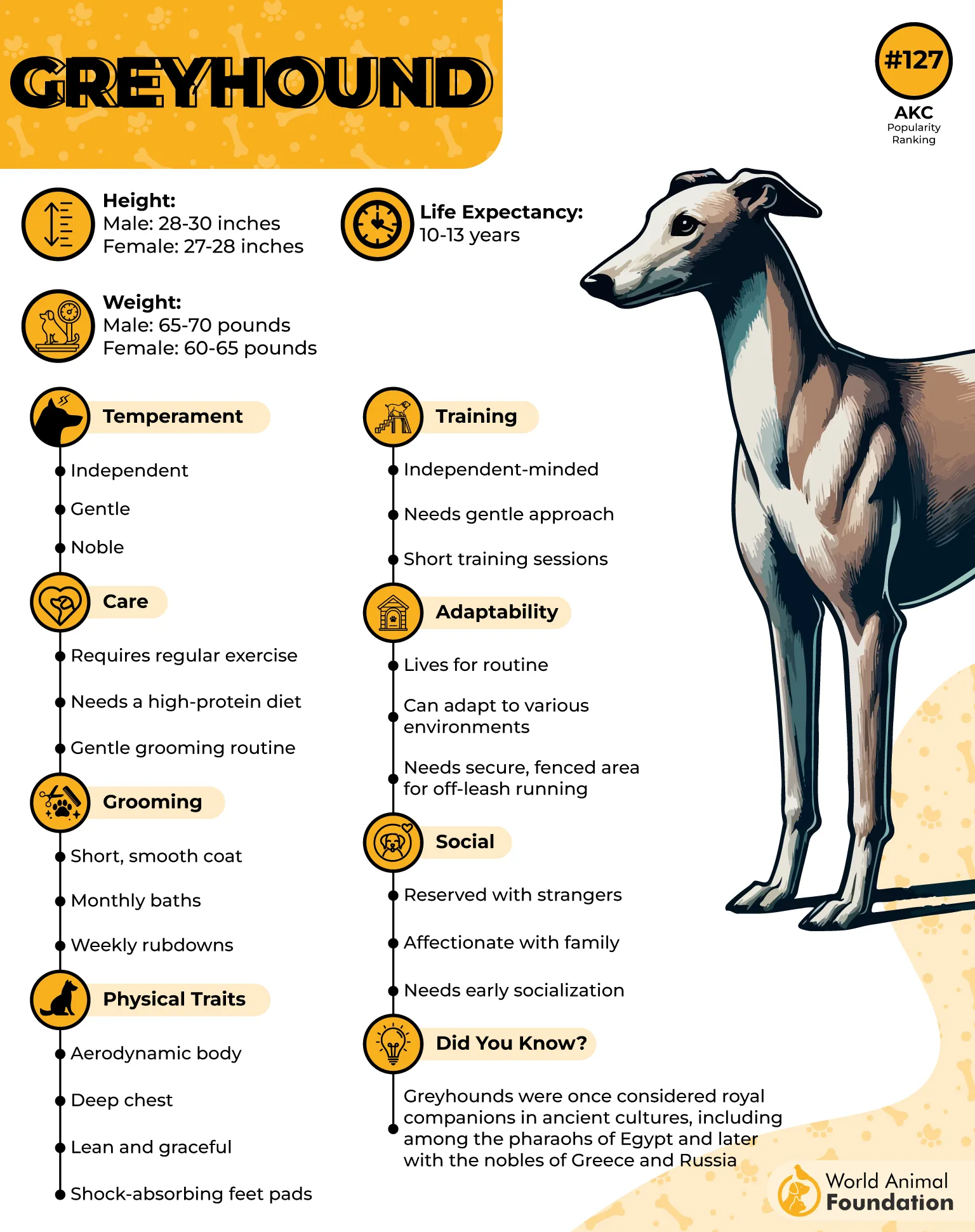
Care Needs
These large breed dogs require relatively minimal grooming due to their short, smooth coat, making them low-maintenance in the grooming department. They thrive on moderate daily exercise, short sprints or brisk walks, rather than extended endurance runs.
Despite their athleticism, Greyhounds are often affectionately called “45-mph couch potatoes” because of their love for lounging. Owners should be mindful of their cold sensitivity, providing appropriate gear in cooler weather. Preventive health measures such as eye screenings for pannus and DNA tests for Greyhound Polyneuropathy are essential when breeding or adopting.
Fun Fact: Greyhounds are among the longest-living large dog breeds, often reaching 12 to 14 years of age with proper care.
5. Border Collie
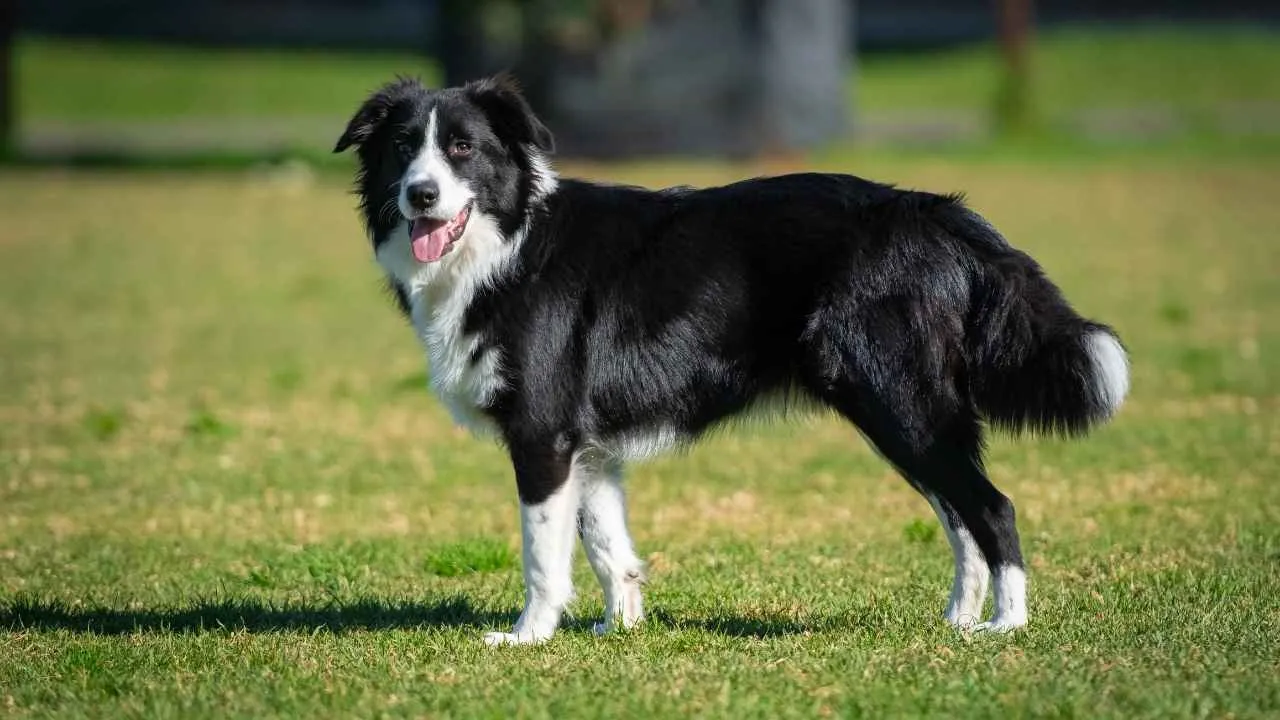
Petplan claims that this smart and elegant breed has a natural drive to work and excels in training, making it a popular choice for roles like mountain rescue and scent detection. Border Collies are not only among the most intelligent dog breeds, but they also rank high for their overall health and vitality.
Bred for hard work and mental focus, these athletic herding dogs are generally robust and long-lived. While some hereditary issues, like hip dysplasia, epilepsy, and Collie Eye Anomaly (CEA), can occur, responsible breeding and proactive care can help manage these risks, making the Border Collie a healthy and rewarding companion for active homes.
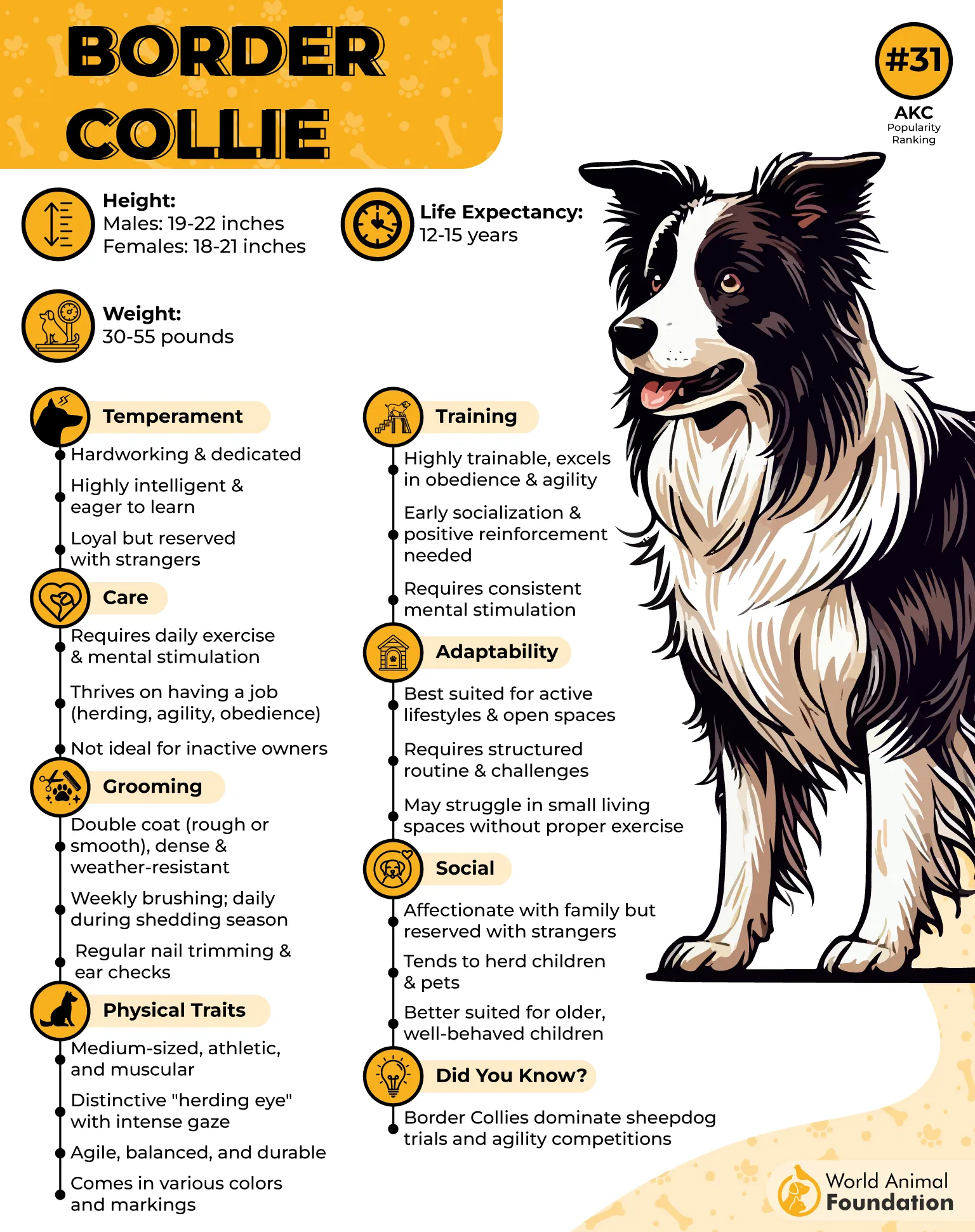
Care Needs
To maintain their physical and mental health, Border Collies require a high level of daily activity and engagement. These energetic dogs thrive on structured tasks like frisbee or advanced obedience work.
Their medium-length double coat benefits from weekly brushing, with increased grooming during seasonal shedding. Routine veterinary care and check-ups are important to screen for inherited conditions early. Border Collies also need mental challenges to stay balanced; puzzle toys and scent games are especially helpful.
Fun Fact: Collie Eye Anomaly, an inherited disorder that can lead to blindness, is present from birth in affected Border Collies, though it often goes undetected until vision loss appears.
6. Pointer
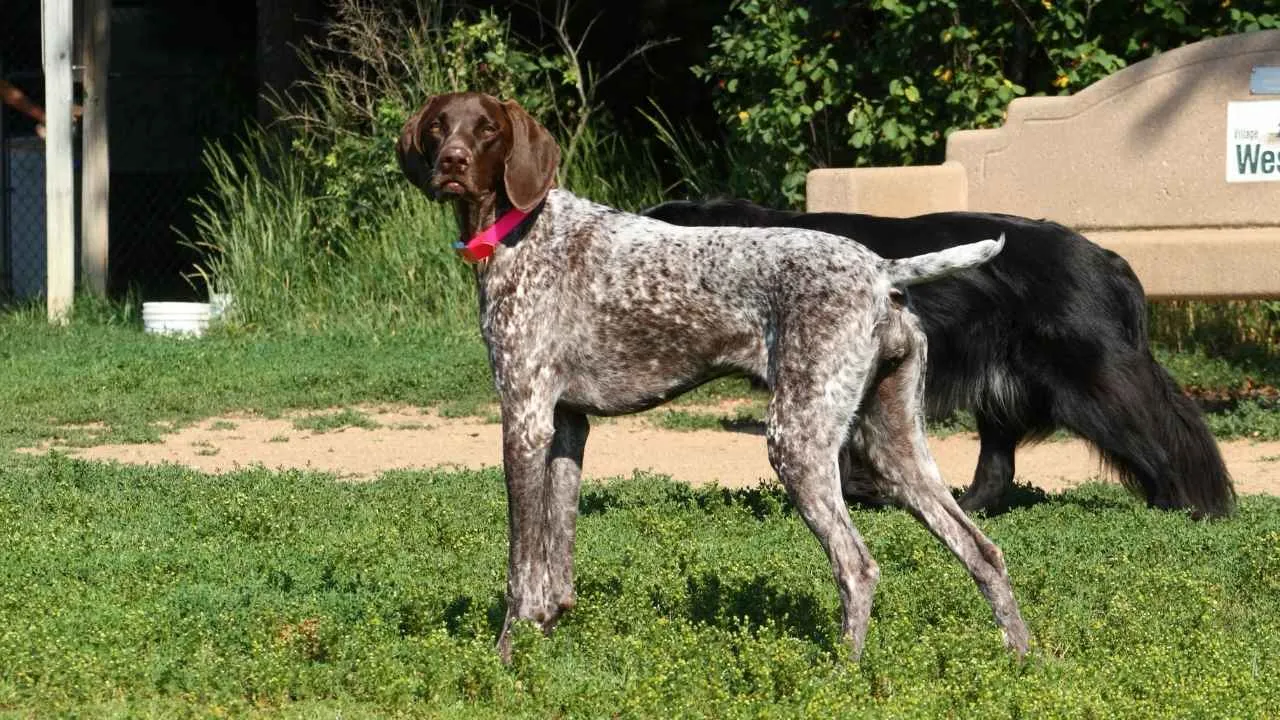
The Pointer is a classic example of a high-performance canine with exceptional overall health. Originally bred for hunting, this breed is admired for its athleticism, speed, and stamina, making it well-suited for active families or outdoor enthusiasts.
Often called “gun dogs” or “bird dogs,” Pointers are typically eager to please and are known for their loyalty and sociable temperament, thriving in homes where they receive plenty of attention and exercise.
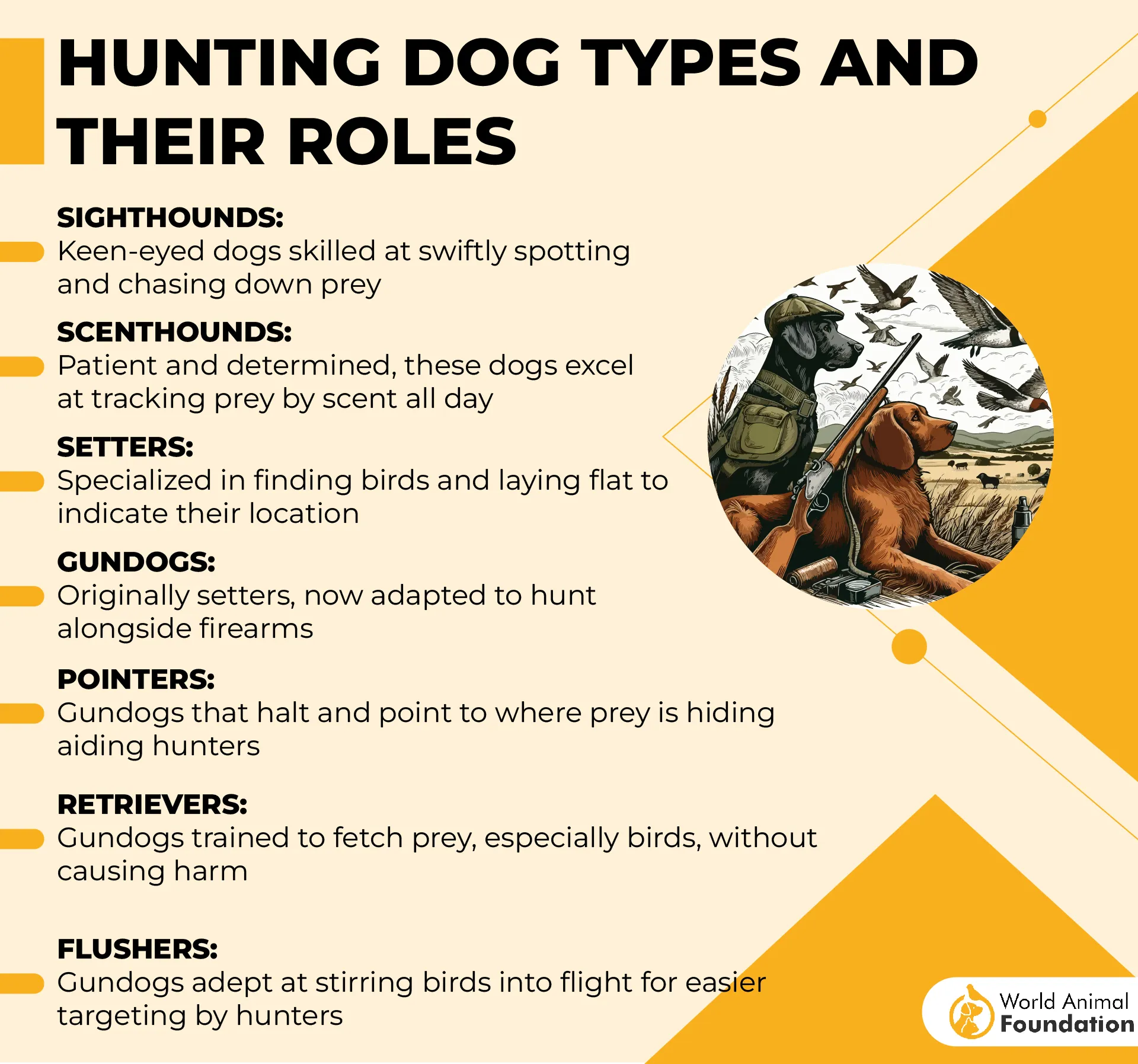
Care Needs
Pointers do best in spacious environments where they can run freely or engage in rigorous activity. Without adequate physical stimulation, their boundless energy can become difficult to manage. Though generally low-maintenance, they benefit from regular brushing to manage their moderate shedding.
Routine dental care and weekly ear checks are also important. Due to their deep chests, Pointers can be prone to bloat, so pet parents should be vigilant about recognizing early symptoms. Health screenings for hips, elbows, eyes, and thyroid are recommended by the breed club to ensure long-term well-being.
Fun Fact: Pointers’ natural hunting instincts and endurance have made them one of the most reliable and versatile field dogs for centuries.
7. Shiba Inu
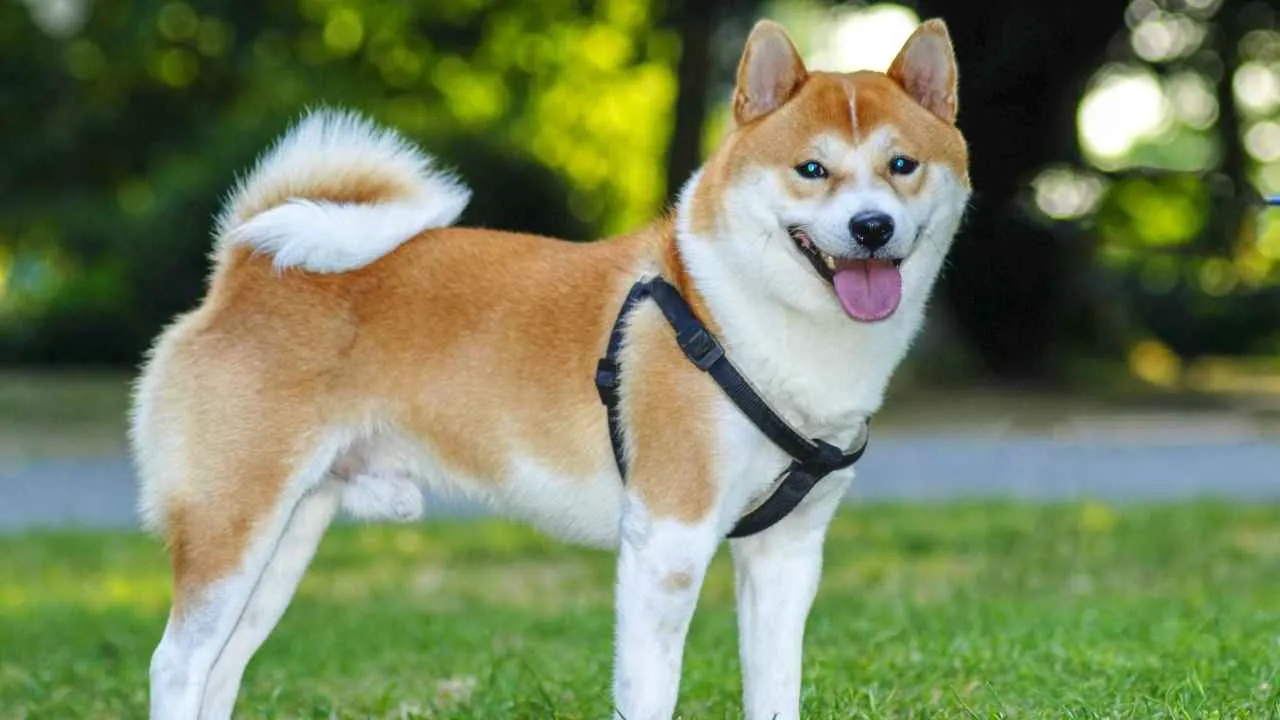
The Shiba Inu is a compact, spirited breed with ancient roots tracing back thousands of years in Japan. Originally bred to hunt small game in mountainous terrain, today’s Shiba Inu is known for its self-assured nature, foxlike appearance, and it’s a remarkably healthy breed.
Their resilient genetics and moderate size contribute to a longer-than-average lifespan and a strong constitution, making them one of the healthiest dog breeds when properly cared for.
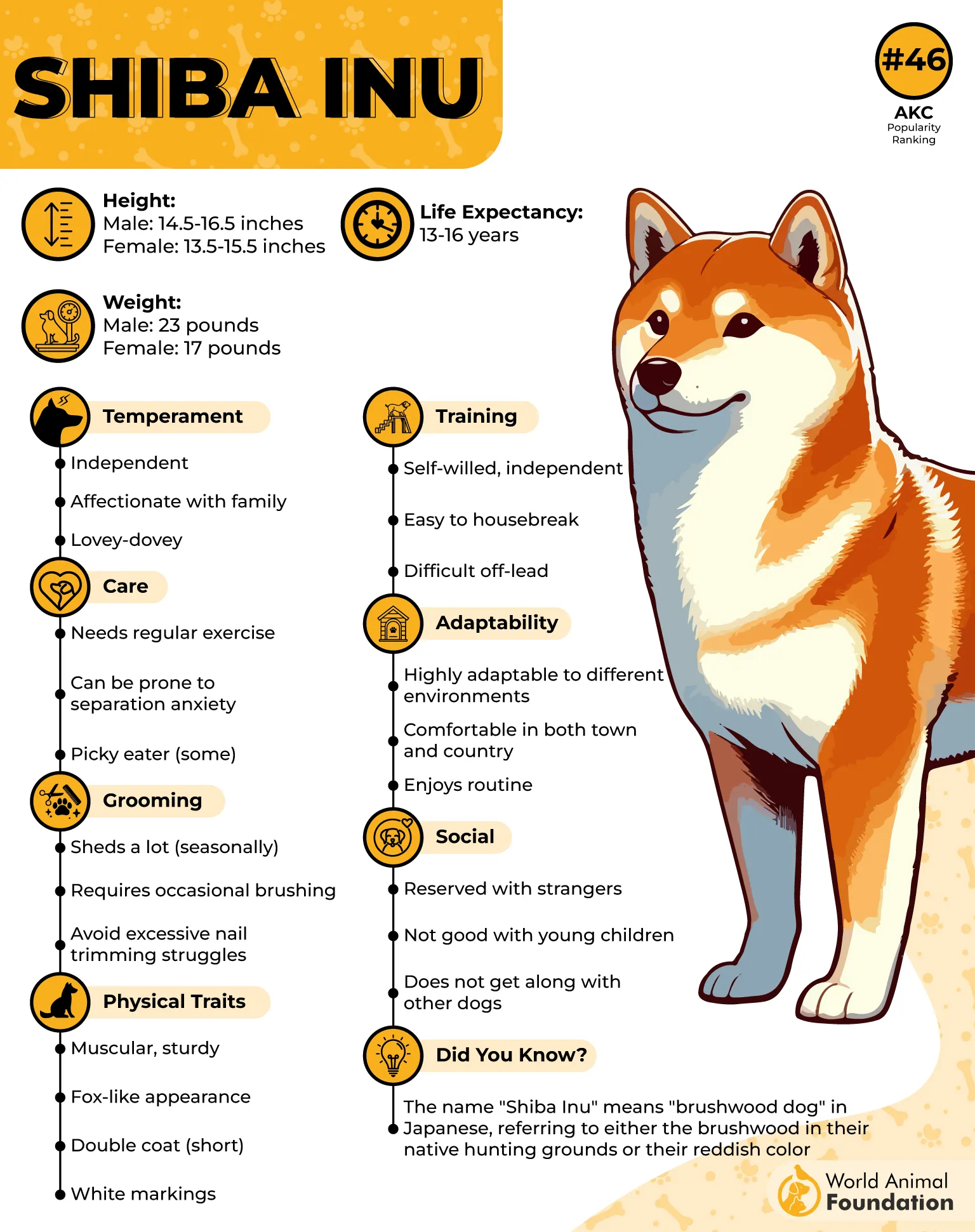
Care Needs
Although generally hardy, Shiba Inus can be predisposed to a few conditions, such as hip dysplasia, allergies, and hypothyroidism. Preventative veterinary care and early screening are key in managing these risks.
Their plush double coat sheds seasonally and benefits from weekly brushing. They also need regular exercise and mental stimulation to stay balanced, as boredom can lead to unwanted behaviors. Known for their independence and occasional stubborn streak, early socialization and firm, consistent training help ensure a well-adjusted companion.
Fun Fact: Despite their small size and tidy appearance, Shiba Inus are famous for their dramatic “Shiba scream,” a loud, high-pitched vocalization typically heard when they’re excited or displeased.
Conclusion
Choosing from the healthiest dog breeds is a great way to start your journey toward a happy, active life with your pet. While each individual dog will have its own unique health needs, certain breeds are known to face fewer health issues thanks to strong genetics and responsible breeding. Whether you opt for purebred dogs or mixed-breed dogs, it’s essential to consider their lifestyle compatibility, activity levels, and potential health concerns.
Some breeds, like the German Shorthaired Pointer, are athletic and versatile with a reputation for being dog healthy well into their senior years. Selecting from a dog breed native to a specific region may offer additional genetic stability, especially when those dogs have been developed for endurance and utility. Working with reputable breeders helps ensure your pet has been screened for inherited diseases, keeping the gene pool strong and resilient.
Remember, while no dog breed is entirely free from risk, many other dogs in this group enjoy vibrant lives without facing life-threatening genetic conditions. Prioritize proactive care, regular vet checkups, and early detection to give your pup the healthiest life possible.


